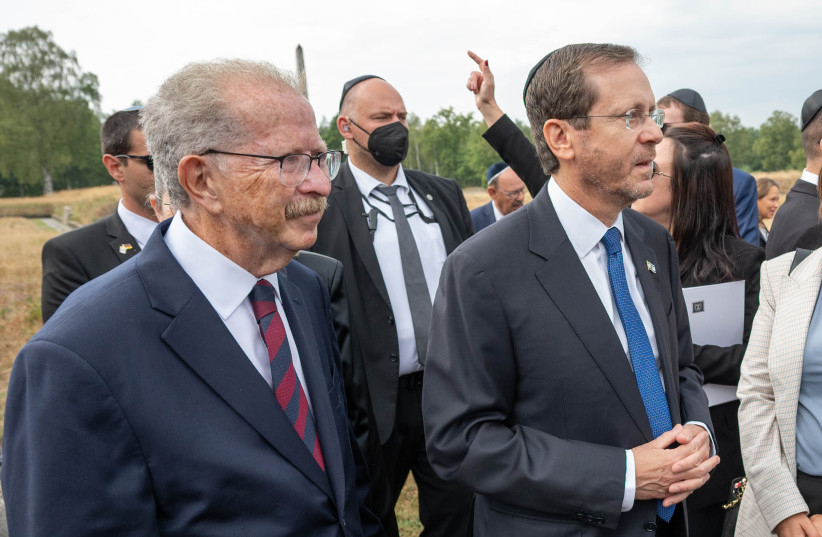The Prophet Ezekiel’s memories of serving as a priest – the son of Buzi – in the Jerusalem Temple earlier in his life must have fortified him in exile. The Babylonian superpower first occupied Jerusalem in 598 BCE and, as a member of the elite as a kohen, he was exiled to Babylon with thousands of other prominent Jews.
Life in Bavel, from an objective standpoint, was a far cry from the suffering of Jews in other Diasporas of history, but it was a terrible place to reside nevertheless. Psalm 150 is an expression of despair and anger: The exiles sat down by the rivers of Babylon and wept for their beloved Zion, and asked “How can we sing a song to the Lord on alien soil?” They would never forget Jerusalem. Neither would Ezekiel, the only prophet in the Hebrew Bible who carried out his mission while in exile.
As Rabbi Joseph Telushkin writes in Biblical Literacy (1997), “Ancient records note the involvement of Jews as builders and craftsmen in Babylon’s royal buildings, while the Babylonian government granted the Jews considerable autonomy in conducting their religious affairs.” Still, it must have been a terrible blow to the exiled Jews when, in 587 BCE, the Babylonian war machine put down a rebellion of the Kingdom of Judah, razed Jerusalem, and destroyed the Temple of Solomon.
Other prophets in exile preached a swift return of the exiles to the Land of Israel. But Ezekiel disagreed. Still, though he prophesied that the Temple would be destroyed by the enemy, he never lost the optimism that the Temple would be rebuilt and sacrifices resumed. He never gave up hope that the exiles would rise up from their humiliation and defamation and would return to Zion.
Bones coming to life
Likely the greatest and most vivid prophecy in the Hebrew Bible is found in Ezekiel 37. In this prophecy, Ezekiel envisions himself standing in a valley of bones, lifeless and dry. “God asks: O mortal, can these bones live again?” When the prophet answers only God knows if these bones can come to life, God answers “I will cause the breath to enter you and you shall live again.” God revives the dead. They stand on their feet. And God tells Ezekiel: “O mortal, these bones are the whole House of Israel.”

God opens their graves and promises to bring the revived people to Jerusalem. While it is obvious that this prophecy is of the return of the Babylonian exiles to Zion in ancient times, Ezekiel’s vision moves today’s generation to tears and pride. We think of those Jews liberated by the Allies in Bergen-Belsen and Dachau in 1945, many who were barely alive and who were human skeletons, starved, their skin barely covering their bones.
Many of these “living skeletons” died from disease and malnutrition. But a remnant had the fortitude to recover and rebuild their lives. These were Ezekiel’s bones returning to life, a people revived after the worst persecution of Jews in our history. And then, of course, there was the refugees’ return to the Land of Israel and the incredible reality of the establishment of a Jewish State. Although prophesied 2500 years ago, Ezekiel’s vision is our vision.
But Ezekiel should not just be remembered for the “Valley of the Dry Bones” prophecy. The first chapter of his prophecy is a vision of God that has been central to Jewish mysticism for centuries. As historian Robert M. Seltzer writes in Jewish People, Jewish Thought (1980): “The literary style of Ezekiel is significantly different from that of pre-exilic prophets. He reports more extended and detailed visions, and makes more use of elaborate symbolic acts and allegories.”
The “Chariot-Throne” vision of God that Ezekiel describes in spectacular language and imagery, dominated the theology and practice of early Jewish mystics and continues to influence generations of Kabbalists. The melding of God’s words and the imagination of the prophet are stunning. This vision took place by the Chebar Canal, by the exile settlement of Tel Abib near the city of Nippur.
Ezekiel should also be remembered for his reimagining of the rebuilt Temple in Jerusalem. From design to ritual, the prophet-priest devotes chapters of detail to the Second Temple. He only envisioned priests from the line of Zadok, with the help of the Levites, conducting sacrifice in the Temple and teaching the people the laws to distinguish between sacred and profane.
He envisions an End of Days, in which his famous prophecy of “Gog and Magog” brings God’s final justice to the Jewish people. In the words of historian Seltzer: “After this victory, God’s greatness and holiness will be acknowledged by all nations.” Ezekiel’s visions were eventually brought back to Zion and his imaginings of the rebuilt Temple had an influence on the structure in the Persian and Hellenistic periods.
The prophet did not live to see his prophecy fulfilled. This is the fate of most visionaries. What Rabbi Telushkin in his Jewish Literacy (1991) says of Jeremiah, quoting the philosopher Nietzsche, “Some men are born posthumously.” Ezekiel encouraged a demoralized exile community, presenting them with a vision of patience and hope. Often in our history, we imagine that we are living in the closing chapters of an epic chronicle. We need today more men and women like Ezekiel. He did not give in to those looking for an easy answer and a quick return to an untainted Eretz Yisrael. But his prophecy and imagination were uplifting and reflected a reality that would be realized after his death.
While most of the Babylonian exiles chose to stay where they were, thousands did return to their point of origin. Their legacy is still with us, as is the legacy of a later phase of Jewish history in Babylonia. Never again will we be corpses in a valley of dry bones but a living, thriving people.
The writer is a rabbi, essayist, and lecturer in West Palm Beach, Florida.
